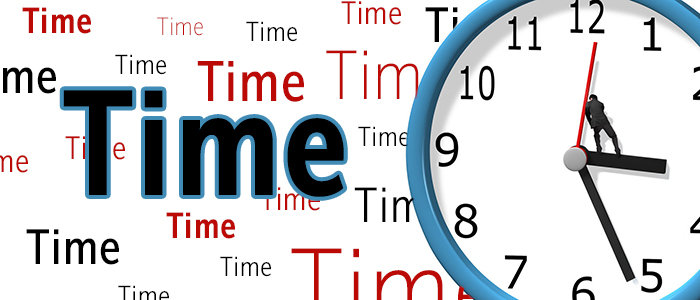 Everyone is trying to manage time. When you hear them talk, you would think it could be manipulated — stretched or duplicated. It isn’t possible and for those who think they can, it’s more of a game than a solution.
Everyone is trying to manage time. When you hear them talk, you would think it could be manipulated — stretched or duplicated. It isn’t possible and for those who think they can, it’s more of a game than a solution.
Knowing there are but 24 hours in a day, the challenge becomes more about how we plan, schedule, and utilize our minutes than it does with attempting to find more.
All of us are wired just a bit different. For some, we take a logical, analytical approach to any decision; while some assess the impact a decision will have on others and compare that to their closely held values. Neither is right or wrong, the question is, are we applying the right percentage of energy, effort, and time to what the problem needs?
It’s difficult to come down hard on anyone who collects facts or applies logic to a problem. Where they run into trouble is when they only use their heads. What if the facts don’t tell the whole story? Is analysis the only part of decision making?
I’m a fan of the Myers Briggs Type Instrument and administer it to all new executive coaching clients. Recently, I have been using the data to help clients get the most from the time they have.
Let’s say you’re a logical person by nature and a what you see is what you get type of individual who likes to attack a problem early and come to a concise solution — on time and on budget. That’s fine and in the corporate world that can be considered really fine.
I would challenge that it is incomplete. In MBTI terms, it’s all sensing and thinking with a real judging approach. What potentially could be lost? Options and alternatives for one. Deadlines are great and very necessary; however, they can prevent time from being spent looking at possibilities. We all know people who are so driven to get to their destination they fail to see the view or miss the special detour that would make the journey so much more rewarding.
On the other side are people with few benchmarks or deadlines who may be only using values as the litmus test. They become so engaged in the process and looking at patterns of behavior, they fail to finish or ignore obvious facts. This is an equally troubling approach.
I’d suggest you intentionally do some of all.
Try this. Create a pie chart with the entire pie representing either an hour or a workday when you need to find an answer. Ask yourself, “How much time would I spend using logic versus seeing the impact the decision will have on those affected?” Give each a piece of the pie. Next, assign slices to represent time spent setting deadlines and structure versus examining options or other routes. Finally, be honest, how much time and effort would be spent in fact collecting, while how much would be given to looking for patterns? They both need to get a piece. If you still have extra pie, distribute the excess to the areas you see as most important. If you need space (time) take from the least important.
Now the hard part — look at your pie. Have you assigned a huge percentage to one or two activities? Of course, because this is your natural inclination. What is the risk of concentrating so much with only part of the process? If you take most of the time seeing patterns and not enough collecting facts, will you have a harder time selling your decision to others. If everything is logical but fails to consider people, how likely is the decision actually going to work? Deadlines are great but what if you run to the conclusion without considering other possibilities?
With that in mind, draw another chart, your ideal pie. The slices probably won’t be equal but some may need to get more than you originally allocated because of what they have to offer. E.g., most analysis takes more than three minutes.
Teams can use this exercise to help them generate ideas or make decisions. Just as individuals are inclined to go with their strengths, so groups go with what comes naturally as well.
Time can be wasted when we allow ourselves to work on tasks and projects in a way we feel most comfortable. By designing a time pie, you can better tailor your usage to the challenge at hand.
Allocating time to allow for all aspects of a task or decision can be an effective way to manage and get the most from time. Making it visual gives you more insight into your plan and can make you aware of tendencies to overwork in one area and ignore another. For some people, operating with a pie chart template helps them address everything from phone calls to long-term projects. Give it a try.
You subscribe to a cable system, you consume your lattes, you put some money away into a retirement plan — yet when it comes to your career, there is little time or money spent on bringing it to the next level.
Leave a Reply